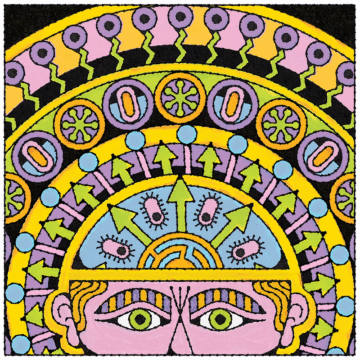Nick Paumgarten in The New Yorker:
 For months, during the main pandemic stretch, I’d get inexplicably tired in the afternoon, as though vital organs and muscles had turned to Styrofoam. Just sitting in front of a computer screen, in sweatpants and socks, left me drained. It seemed ridiculous to be grumbling about fatigue when so many people were suffering through so much more. But we feel how we feel. Nuke a cup of cold coffee, take a walk around the block: the standard tactics usually did the trick. But one advantage, or disadvantage, of working from home is the proximity of a bed. Now and then, you surrender. These midafternoon doldrums weren’t entirely unfamiliar. Even back in the office years, with editors on the prowl, I learned to sneak the occasional catnap under my desk, alert as a zebra to the telltale footfall of a consequential approach. At home, though, you could power all the way down.
For months, during the main pandemic stretch, I’d get inexplicably tired in the afternoon, as though vital organs and muscles had turned to Styrofoam. Just sitting in front of a computer screen, in sweatpants and socks, left me drained. It seemed ridiculous to be grumbling about fatigue when so many people were suffering through so much more. But we feel how we feel. Nuke a cup of cold coffee, take a walk around the block: the standard tactics usually did the trick. But one advantage, or disadvantage, of working from home is the proximity of a bed. Now and then, you surrender. These midafternoon doldrums weren’t entirely unfamiliar. Even back in the office years, with editors on the prowl, I learned to sneak the occasional catnap under my desk, alert as a zebra to the telltale footfall of a consequential approach. At home, though, you could power all the way down.
Still, the ebb, lately, had become acute, and hard to account for. By the standards of my younger years, I was burning the candle at neither end. Could one attribute it to the wine the night before, the cookies, the fitful and abbreviated sleep, the boomerang effect of the morning’s caffeine and carbs, a sedentary profession, middle age? That will be a yes. And yet the mind roamed: covid? Lyme? Diabetes? Cancer? It’s no hipaa violation to reveal that, as various checkups determined, none of those pertained. So, embrace it. A recent headline in the Guardian: “Extravagant eye bags: How extreme exhaustion became this year’s hottest look.”
It was just a question of energy. The endurance athlete, running perilously low on fuel, is said to hit the wall, or bonk. Cyclists call this feeling “the man with the hammer.” Applying the parlance to the Sitzfleisch life, I told myself that I was bonking. At hour five in the desk chair, the document onscreen looked like a winding road toward a mountain pass. The man in the sweatpants had met the man with the mattress.
More here.
